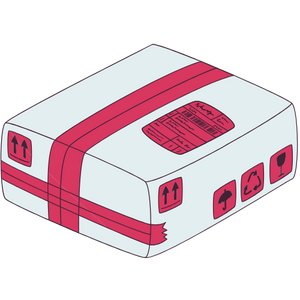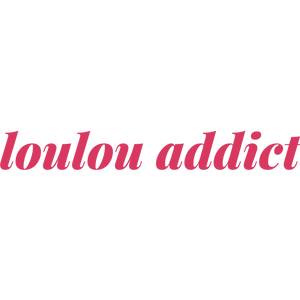Washing your vulva: the right way, the right products, the right routine

How should you wash your vulva? Should you use a specific product or just water? What’s the right way to handle intimate hygiene? How often should you do it? What are the risks of being too aggressive?
Intimate hygiene is a big topic! With all the myths, old wives’ tales, and advice from your friends, it can be hard to know what to do. But intimate hygiene is important and sensitive—you need to do it right, have a regular routine, and use the right products to protect your vaginal flora and maintain your pH balance.
Feeling lost? Don’t worry—Louloucup is here to share all the tips you need to wash your vulva gently and safely.
🛀🏽 Vulva, intimate hygiene, and vaginal flora
First, a quick reminder of terms and definitions is in order.
The vulva
When we talk about the vulva, we mean the external intimate area, everything that’s visible—not the vagina (which isn’t visible). Washing your vulva, or vulva cleansing, means cleaning the labia and pubic area in particular.
Intimate care
Intimate hygiene includes washing the vulva and the area between the buttocks where the anus is. Vaginal douching is never recommended. It can cause infections or yeast infections. So we’re only talking about external washing, of everything that’s visible.
The vaginal microbiome
The vaginal flora or vaginal microbiome is, just like in the gut, a collection of microorganisms naturally present in the vagina. This flora is always balancing good and bad bacteria. If you clean too aggressively, the pH balance is disrupted and this can have many consequences.
Did you know? Regular disposable tampons can disrupt vaginal flora and dry it out, increasing the risk of yeast infections. The tampon composition (you'll find chlorine, pesticides, etc.) is a real issue for women's intimate health. On the other hand, medical-grade silicone menstrual cup free of BPA and latex, is a very interesting, healthy, and clean internal alternative!
Three must-have Louloucup period panties 🥰
🛀🏽 Washing your vulva: vaginal pH
Gentle, regular, and appropriate cleaning helps maintain your vagina’s pH balance. Just like the pH of your swimming pool water, it shouldn’t be thrown off, or else harmful organisms can flourish.
The healthy pH for your vagina is between 4 and 4.5, making it an acidic ecosystem. The vaginal mucosa is slightly acidic, thanks to the good bacteria produced, the lactobacilli.
The acidity of lactobacilli helps fight off fungi and other microbes that might want to take refuge in your vagina. These good bacteria, lactobacilli, are so acidic that they’re actually responsible for bleaching your underwear.
Good to know: The pH of the vagina changes slightly during the menstrual cycle depending on the various events and phases it goes through. During your period, blood with a pH of 7.2 makes the vagina less acidic, bringing it to around 6. During ovulation, to help sperm reach a welcoming environment, the vagina becomes even less acidic and turns neutral (around 7.5). In the luteal phase, the vagina becomes more acidic again, returning to a pH of 4.
Excessive washing, improper intimate hygiene, or using the wrong products can disrupt the pH of the vagina. When that happens, there aren’t enough good bacteria left to fight off potential outside threats and infections.
🛀🏽 What are the risks of improper washing?
Not washing or improperly washing your vulva? You risk some nasty discomfort.
Irritation, burning sensations, itching, as well as unpleasant odors, discolored, thick, and smelly discharge (white, brown, or other colors)—the symptoms vary, but all are uncomfortable. Sexual intercourse can also become painful. Lubrication may no longer work well, making sex irritating and unpleasant.
Developing a vaginal yeast infection or bacterial vaginosis is fairly common, but it should always be taken seriously.
Cystitis or urinary tract infections can also be caused by improper washing of the vulva.
🛀🏽 What are the best habits to adopt?
As you can see, it's essential to take care of your vaginal flora and properly clean your vulva. But how do you do it?
We recommend adopting a routine that is gentle, respectful, non-aggressive, simple (no need to pile on products), and consistent.
Regular doesn’t mean several times a day! Cleaning too often can actually have the opposite effect of what you want. If you wash your vulva too much, it will become more vulnerable and sensitive. Once a day is enough, during your daily shower. If you shower twice in one day, just rinse with water.
To wash your vulva, use a small amount of a gel or intimate cleanser with a neutral pH and gentle formula, preferably fragrance- and alcohol-free. Ask your gynecologist or midwife for recommendations. Go to a pharmacy or drugstore. Avoid soaps (Marseille and other processed soaps), shampoos, or even regular shower gels, as they are not suitable for intimate care. Also avoid intimate wipes and other lotions or perfumes.
Always get into the habit of wiping from front to back, just like you would in the bathroom. It’s important to wash your vulva first, then your anus—not the other way around.
To dry, don’t rub; gently blot with a towel.
🤔 Other habits to adopt
To respect your comfort, avoid clothes that are too tight.
Wear cotton underwear instead of synthetic. All our Loulou menstrual panties are made with certified organic cotton (Oeko-Tex Standard 100) and are GOTS certified.
If you’re particularly sensitive, or if you’ve had yeast infections or UTIs before, make sure to stay dry, especially in summer. Bring extra underwear, change your period panties during your period, and change out of your swimsuit quickly after swimming so you don’t keep moisture against your intimate areas.
Turn to dietary supplements, like probiotics, to help rebalance your vaginal flora.
To learn more...
Did you like this article? Pin it! 😜



Looking for more tips to make your period easier?































